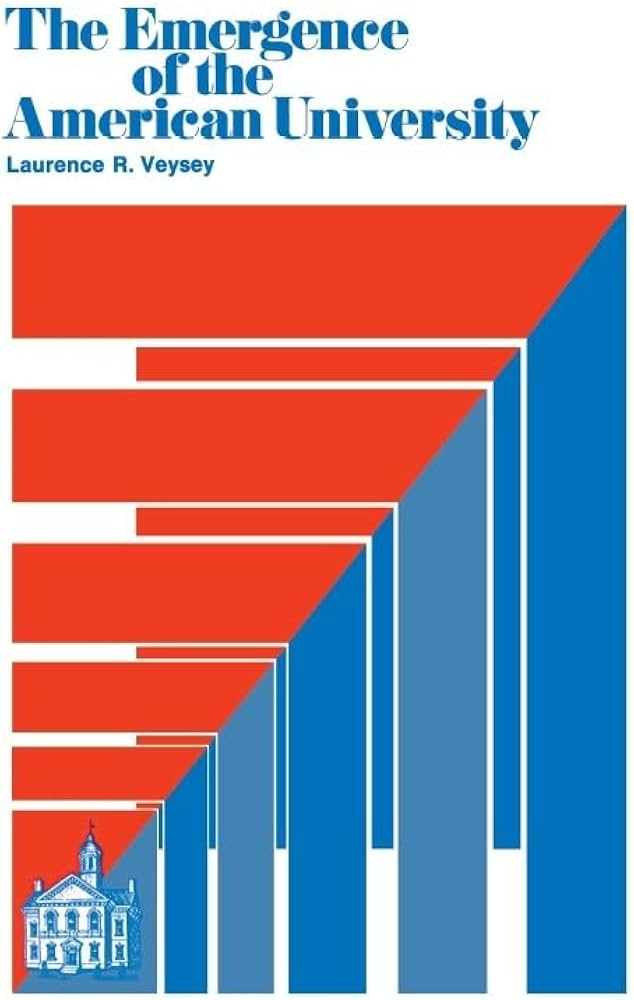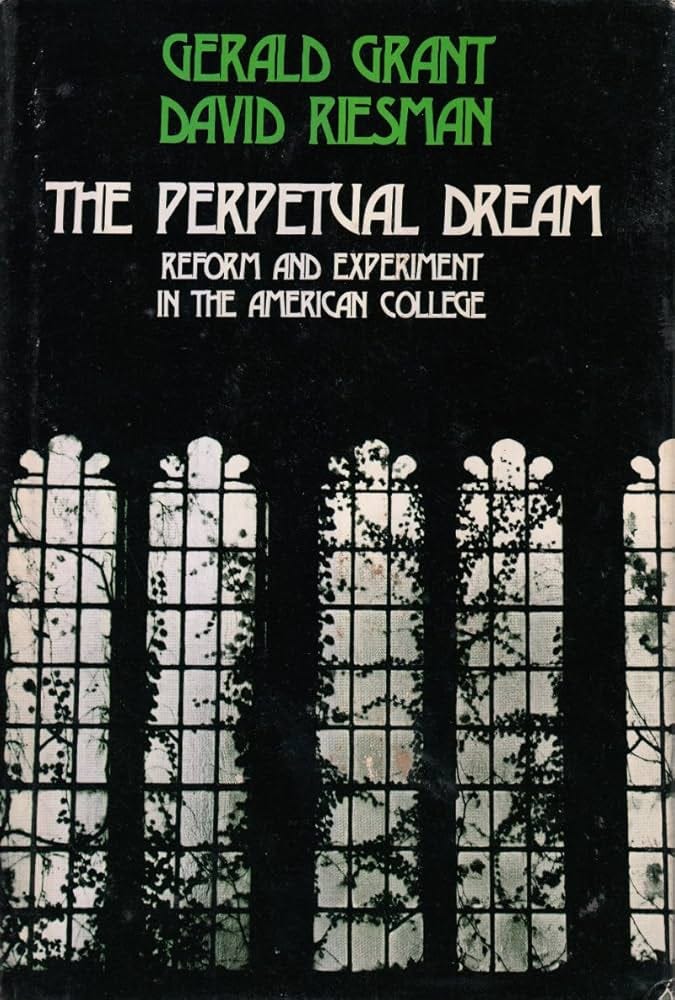Three books about higher education worth reading
There's something here for every taste (as long as your tastes are very similar to mine)
One of the great upsides to being in a doctoral program is that you get to read a lot. Even when I don’t have reading assigned for a course, being here makes me increasingly cognizant of all the things I should know more about. And when I feel that way, it makes me want to find more books to add to my “to-read” list.
A lot of the reading I do here is, tragically, research papers. This is not a medium known for its literary merit. What I find is that despite the quantity of papers I read, books tend to make a bigger impression in forming my patterns of thought.
So today I thought I would share three classics that redefined how I thought about higher education. I can’t promise you’ll like them, but I can promise that I like them.
I’ll tell you why.
The Emergence of the American University by Laurence R. Veysey (1965)
It’s important for me to remember that higher education, as an academic discipline, is a relatively recent phenomenon. It’s a product of sociologists, historians, statisticians, and K-12 education scholars turning their attention toward their own institutions in a newly systematic way. This was a reaction to the massive expansion of the higher education landscape following the Second World War.
Veysey’s history is foundational as one of the first to try to provide a unifying theory to how the American university became what it is from its colonial roots. Despite the temptation many still have to point to the 1940’s as the moment of transition, Veysey contends that transformation was an issue of scale, not kind.
The transformation that really matters is what happened in the twenty years before and after 1900. It was in this period that you saw institutional expansion from 500 students to 5,000. He makes it clear that the structure of a 5,000-student campus is much closer to that of a 50,000-student campus than to its predecessor.
I cannot deny the density of this book. It tries to teach a broad topic through detailed anecdotes. You get to see institutional transformation “in real time” as the faculty and administrative leaders of the period adapt to new demands and new potential. Although the text goes deep, you’ll never think of the university the same way again after reading it.
The Perpetual Dream: Reform and Experiment in the American College by Gerald Grant and David Riesman (1978)
This was a book that I read before starting my program at IU, but it showed me the kind of work that was possible.
The book is composed of a series of case studies where the authors spend extended time at non-traditional college programs across the country. The authors explore how the programs were developed in the first place and provide plenty of observations and interviews with students and faculty to understand the experience from an insider’s perspective.
One particularly interesting element in reading this book now is seeing how many of the profiled programs either disappeared or lost their experimental edge. The chapter about St. John’s College feels very familiar, as that program has managed to mostly freeze its curriculum in time. But others, like the highly experimental Kresge College within UC-Santa Cruz, would not even survive the decade.
One thing this points to is the challenge of academic experiments. Programs located within larger, traditional institutions always face pressure to justify themselves and will often lose out to the creeping norms of the greater university. Independent programs may not face pressure from a centralized organ, but they face more financial risk if their experiment is not immediately successful or permanently attractive.
But despite the “failure” of most of the programs mentioned, they were not the last experimental college programs. This book is useful because it helps you understand the motivations undergirding the “perpetual dream” to reform higher education and helps categorize the efforts at experiment we see today.
Lastly, I currently have the only review of this one on Goodreads, but I definitely think it deserves more love than that.
Take Ivy by Teruyoshi Hayashida (1965)
Text by Shosuke Ishizu, Toshiyuki Kurosu, Hajime (Paul) Hasegawa
Okay, I’ll admit that the first two are not the most readable. They’re dense and somewhat specialized. I think they reward a close reading, but you need to have some real vested interest to put in the work.
This one is different. Take Ivy is for everyone.
This is essentially a coffee table book. Published in Japan in 1965, this is a descriptive photo collection about how young men at a few Ivy League institutions dressed in the mid-1960’s. It was published in English for the first time in 2010.
What I love about this book is how much of a spotlight it puts on the collegiate aesthetic, writ large, as symbol. In studying higher education, it’s very easy to focus on what an institution does or should do academically and forget that so much of what it does is send social signals.
When we look at these pictures, we’re seeing a lot of young men in Oxford shirts and sensible blazers. But, importantly, we’re seeing them cast against the background of the stone and marble, the spires and columns, the grass and the ivy of a prestigious institution. The whole picture, the clothes and buildings and people around, are so essential to understanding why people go to college. They go, at least partly, to join an aesthetic, to take on the mantle of “one who goes to college.”
Exactly what that looks like for students today is different than it was in 1965. But by seeing these photos at some remove, perhaps the aesthetic value of the experience is more obvious to our eyes than looking at contemporary photos would be. Perhaps by looking directly at the past, we can get a better sense of what the “spirit” of college can mean for people, even today.
-Matt







Looking for my old blazer right now...